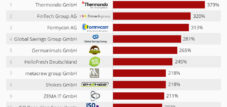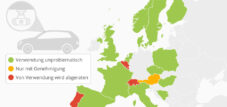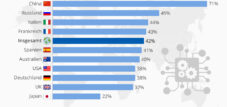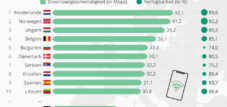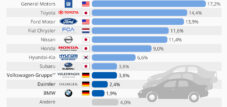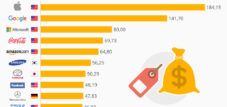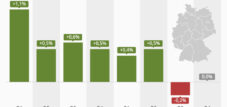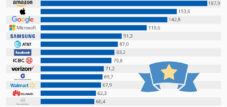Germany is one of the most innovative countries in the world
Language selection 📢
Published on: August 28, 2018 / update from: August 31, 2018 - Author: Konrad Wolfenstein
+++ Germany is so innovative +++ German car manufacturers are drivers of innovation +++ Austria's growth champions 2018 +++ The future in the fast lane +++
Germany is so innovative
Germany is one of the most innovative countries in the world. In last year's Global Innovation Index, the Federal Republic was in ninth place - number one is Switzerland. An indicator of a country's creative potential is the inventiveness of its residents.
German corporations, companies, universities and inventors in the areas of mechanics, machine and tool construction as well as transport are responsible for around a third of all patents granted by the European Patent Office, as our infographic originally created for manager magazine shows. On the other hand, Germans are significantly less innovative in the areas of telecommunications and digital communication.
In 2017, 67,707 patents were registered with the German Patent and Trademark Office. This corresponds to 58 patent applications per 100,000 inhabitants. The most patents were registered in Baden-Württemberg (132/100,000) and the fewest were in Saxony-Anhalt and Mecklenburg-Western Pomerania (8/100,000 each).
Data from the European Patent Office can be used to show where Germany is a driver of innovation – and where it is not. 34 percent of the patents granted in the field of “mechanical elements” went to Germany, as the graphic from Statista shows. Local inventors are also leading in other more classic categories such as machine tools or civil engineering. In contrast, things look rather poor in future fields such as “audiovisual technology” or “telecommunications”.

German car manufacturers are drivers of innovation
Car doors that block when a bicycle approaches from behind or networked vehicles that show each other free parking spaces - such innovations from car manufacturers make driving safer and less stressful. As Statista's infographic based on data from the Center of Automotive Management shows, German car manufacturers are particularly keen on innovation: Volkswagen, BMW and Daimler are ahead of Toyota and Tesla in the index ranking. To determine the index value, the innovations are evaluated according to various criteria, such as maturity, originality and customer benefit. Innovations were particularly highly rated for the models Audi A8, BMW 5 Series, the Cadillac CT6, the Mercedes S-Class and the Tesla Model S 100 D. The latter vehicle has the highest range of all series electric cars at 632 km.

Austria's growth champions 2018
Which innovations and business ideas spark? And which companies manage to achieve particularly high sales and employee growth? For the first time, the independent market research institute Statista and the Austrian magazine profil have examined the question of who will end up on the winner's podium in Austria on these issues. As part of a comprehensive data collection, “Austria's Growth Champions 2018” were identified, which now appear in profil (issue 47, EVT November 20, 2017). The result is a unique list of 150 Austrian companies that are growing well above average.
Overall, many companies in the list come from the IT and e-commerce sectors. Particularly striking and a national Austrian peculiarity in an international comparison: the processing and manufacturing sector is very well represented in the ranking of Austria's growth champions 2018. The list also offers a showcase of new, clever business models and high-growth ideas.

The future in the fast lane
Just 19 days after Pokémon Go was released on July 6, 2016, 50 million people around the world were engrossed in their cell phones running red lights, running confused into street signs, and swarming public spaces in search of the strongest monsters.
When Ferdinand Graf von Zeppelin founded the first commercial airline in 1909 and thus laid the foundation for the interconnection of our world, it took 64 years for the 50 millionth passenger to board an airplane. Our graphic shows: no matter how relevant an invention may be for humanity, other factors are more important for the spread of innovations. What is particularly important is the size of the network in which an invention is disseminated.





